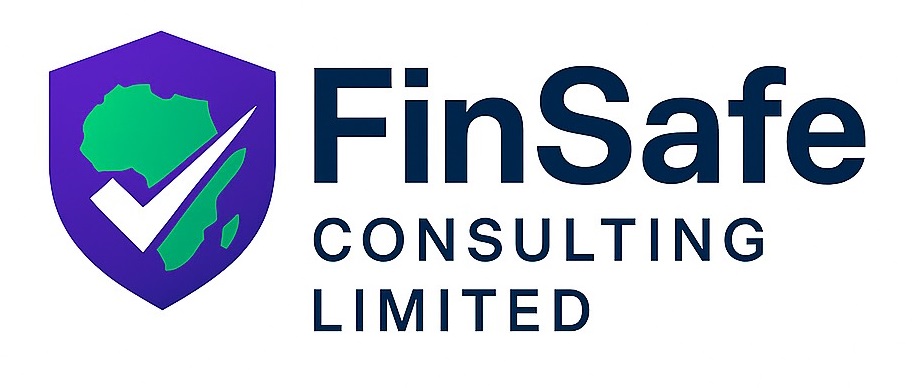
By Finsafe Consulting Limited
Introduction
Fraud risk is evolving as fast as financial technology. From social engineering to insider threats, the danger lies not only in the software but also in the people. Building a fraud-resilient culture is no longer optional—it’s a strategic imperative.
The rise of Artificial Intelligence (AI) and Machine Learning (ML) presents both a challenge and an opportunity: criminals are leveraging technology to commit fraud faster, but institutions can also deploy cutting-edge analytics to detect, prevent, and respond to these threats with unprecedented precision.
At Finsafe Consulting, we believe that a fraud-resilient culture is the first and most critical line of defence. This culture must be embedded in every department, reinforced by leadership, and supported by robust technology and investigative processes.
The Pillars of a Fraud-Resilient Culture
- Leadership Commitment – Fraud prevention starts at the top. Boards and senior executives must set a zero-tolerance tone, integrate fraud risk into strategic planning, and allocate resources to prevention and detection systems. For example, a Kenyan microfinance CEO may open every quarterly meeting with a review of fraud incidents, reinforcing that fraud prevention is a board-level priority.
- Employee Awareness and Accountability – Every staff member must understand that they play a role in protecting the institution’s assets. Regular training, simulations, and real-life case studies can strengthen awareness. In one East African SACCO, an internal tip-off about unusual loan disbursements prevented a KES 15 million loss.
- Proactive Technology Deployment – AI and ML-powered anomaly detection systems can identify unusual transaction patterns in real time, flagging suspicious activity before losses escalate. For instance, a bank’s AI flagged a high-value fund transfer at 2 a.m. from an account that had been dormant for six months—allowing the transaction to be frozen before funds left the institution.
- Integrated Fraud Risk Management Framework – Fraud prevention must be embedded into operational processes, from customer onboarding (KYC) to transaction monitoring and internal audits. A fintech in Nairobi recently integrated biometric verification at onboarding, cutting identity fraud cases by 40%.
2. Investigative Process: From Detection to Resolution
A well-structured investigative process ensures that fraud cases are handled with accuracy, speed, and legal compliance.
Step 1: Detection
- Leverage AI-powered predictive analytics and ML algorithms to scan transaction data for anomalies.
- Encourage employees and customers to report suspicious activities via confidential hotlines or digital reporting platforms.
- Example: AI algorithms detect that multiple mobile loan applications are originating from the same IP address using different identities.
Step 2: Initial Assessment
- The Fraud Risk Team conducts a preliminary review to validate the credibility of the allegation.
- Assess potential financial impact and urgency.
- Example: The fraud team receives a report about payroll anomalies. An initial check shows the same bank account number linked to three different employees—triggering a formal investigation.
Step 3: Formal Investigation
- Assign a Lead Investigator with no conflict of interest.
- Collect evidence (digital logs, transaction histories, CCTV, email records or as applicable) using forensic standards.
- Conduct interviews with relevant staff and witnesses.
- Maintain a secure chain of custody for all evidence.
Step 4: Analysis & Reporting
- Compile findings in a Fraud Investigation Report, including:
- Nature and scope of the fraud
- Evidence summary
- Individuals involved
- Control weaknesses exploited
- Estimated financial loss
- Recommended actions
- Example: The investigation revealed weak dual-authorization controls in the bank’s SWIFT transfer process, which was exploited to send funds offshore.
Step 5: Escalation
- Escalate the report to the Senior Management.
- If criminal activity is confirmed, refer the matter to law enforcement and relevant regulators (e.g., CBK, FRC).
- Example: A SACCO reports a fraud case involving falsified loan documents to the Management, which in turn notifies the SASRA and the Financial Reporting Centre.
Step 6: Remediation & Lessons Learned
- Implement control improvements to prevent recurrence.
- Conduct post-incident training to close knowledge gaps.
- Example: Following a phishing attack, a fintech introduced mandatory cybersecurity training and implemented two-factor authentication for all staff logins.
3. Role of Management in Sustaining Fraud Resilience
Management is not just a recipient of investigation reports—it is the engine that drives the culture of vigilance. Key responsibilities include:
- Championing Fraud Awareness – Regularly communicate the importance of integrity and ethical conduct.
- Investing in Technology – Ensure continuous upgrades to AI/ML fraud detection platforms.
- Supporting Investigations – Provide resources, remove barriers, and protect whistleblowers from retaliation.
- Enforcing Accountability – Take decisive action against perpetrators regardless of position or influence.
- Measuring and Reporting – Track fraud KPIs, such as incidents detected, average resolution time, and financial loss recovery rates.
4. Moving Beyond Compliance to Competitive Advantage
A strong fraud-resilient culture is not merely about avoiding losses—it is a strategic differentiator. Institutions with robust fraud prevention frameworks win customer trust, attract responsible investors, and maintain a competitive edge in an increasingly regulated market.
At Finsafe Consulting Limited, we help financial institutions design, implement, and optimize fraud risk management systems that blend human vigilance with AI-driven intelligence. The result is a culture that not only survives fraud threats but thrives despite them.
Steps to a Fraud-Resilient Culture
- Leadership Buy-In: Management must set the tone.
- Continuous Training: Staff need regular updates on emerging fraud schemes.
- Whistleblower Mechanisms: Create safe, anonymous ways to report suspicious activity.
- Policy Integration: Align HR, IT, and compliance in your fraud risk strategy.
How FinSafe Can Help
We offer fraud risk assessments, policy reviews, and training programs tailored for fintechs, SACCOs, and MFIs and other regulated institutions. Together, we build cultures that resist manipulation and minimize risk.
Contact Us
📧 consult@finsafeconsulting.com | 📞 +254 705 170 385
🔗 LinkedIn: Finsafe Consulting Ltd

